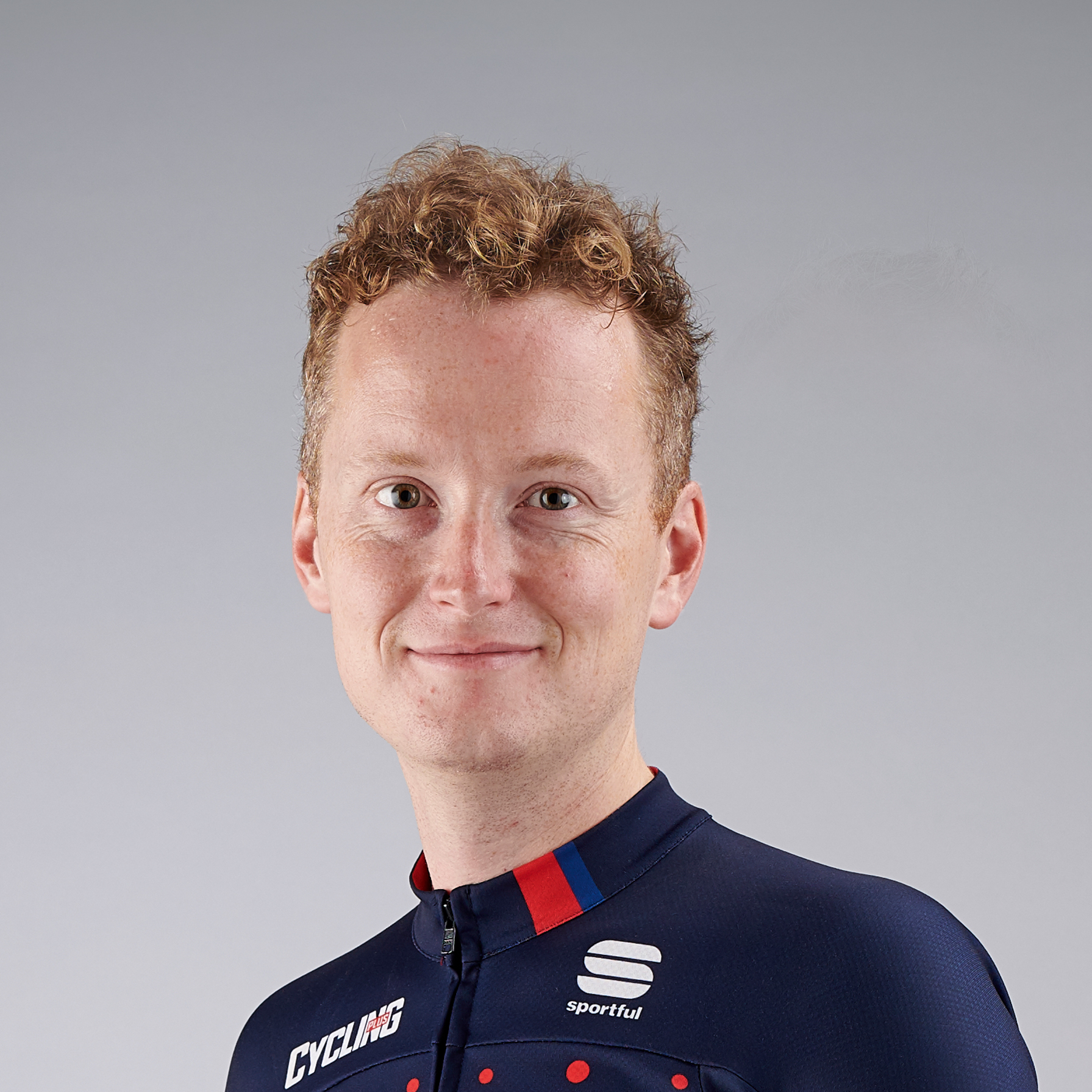Greg LeMond enjoyed cross-country skiing. Richie Porte liked to swim. For pros and amateurs alike, doing something different can be rewarding.
Cross-training is popular in winter – providing respite from muddy lanes and even indoor cycling – but it needn't be the preserve of the off-season, there's year-round appeal, too.
You could be at the end of a hard spell of training, recovering from an injury, or want to improve your all-round conditioning throughout the season. It’s just that winter doesn't always seem the most opportune moment to do so, with few events on the horizon and weather conditions lacking appeal.
It’s not about doing something that will magically enhance your cycling. It’s about having the opportunity to recover from the rigours of a tough sport and trying an activity that is similar but not the same. It’s the differences that make the difference.
"Cross-training can be helpful by allowing body and mind to recover following a long, hard block of training and racing, while preventing a big decline in general fitness,” explains Simon Jobson, professor of sport and exercise physiology at the University of Winchester.
Cross-training can be fun and challenging. LeMond, the three-time Tour de France champion, wasn’t exactly coasting with cross-country (XC) skiing, a sport that vies with cycling for where the highest V02 max values are found. If you think a bike sprint is hard, check out the race finishes from the Mark Cavendish of the cross-country skiing world, Petter Northug.
It was a break from the grind of LeMond’s season, so in that respect it was regenerative. In XC skiing, similar muscle groups are worked but in different ways, enabling you to retain a level of fitness but rest from your bread and butter, building motivation for the new season.
As well as being recuperative, cross-training can be transformative. Doing nothing but riding your bike will create body imbalances, which can lead to over-use injuries in the long term.
“Most riders will benefit from a psychological rest at one or two points in the year, but most will also be keen to limit the fitness losses that result from inactivity,” says Jobson.
"The old adage ‘a change is as good as a rest’ comes into play, with cross-training removing the relentless focus and, in many cases, stress required for regular, structured bike training.”
Running
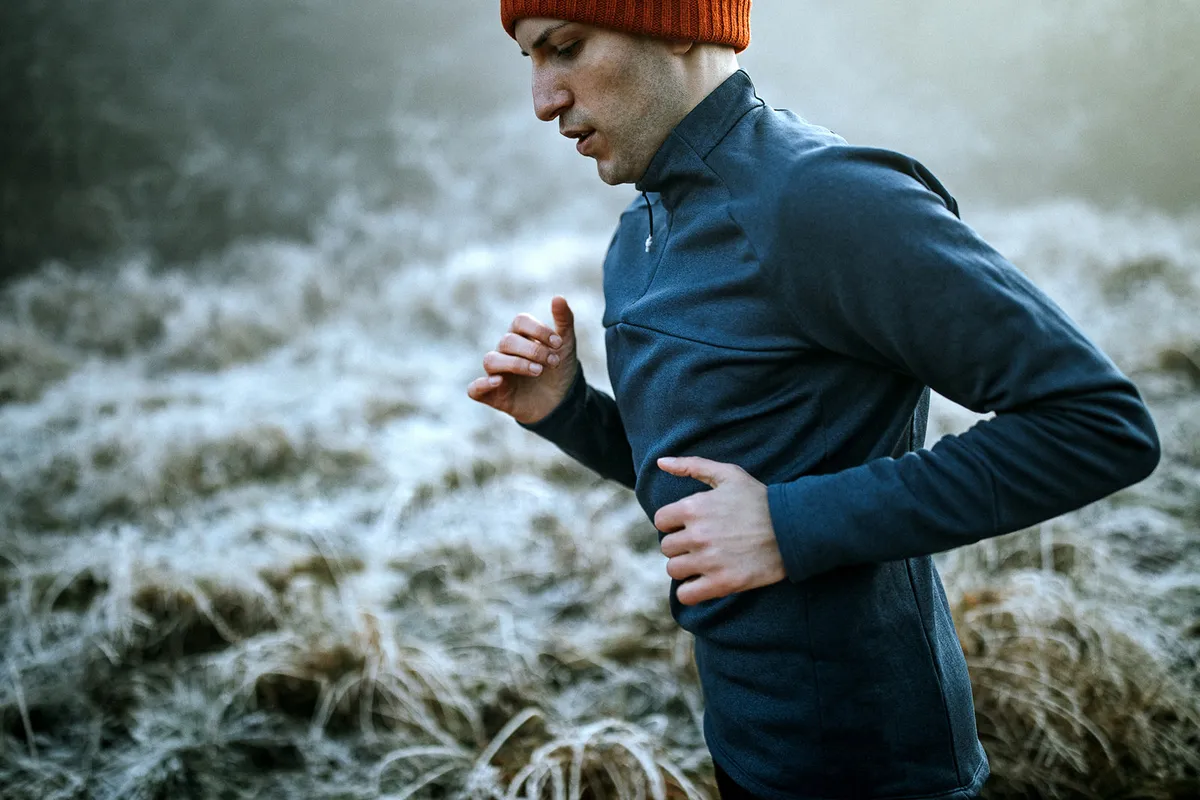
Running is perhaps the most popular cross-training activity for cyclists, but is also the riskiest.
If you have a weak core, poor flexibility or muscle imbalances – all common traits of cyclists who only ride their bike – then running, with its impact forces, might not initially be for you as a cross-training option, and certainly not in large quantities.
Even experienced runners, returning to it after time away, have to be careful not to throw themselves in too hard, too quickly.
Seasoned triathlete Spencer Smith used to compete professionally, and for one season rode for the Linda McCartney cycling team: “I’d decided to turn pro in cycling in September the year before, and in December I went out for a run as a bit of cross-training – for about an hour, which, if I’m honest, should have been shorter. I woke up the next day and felt like I’d been hit by a truck. The key is not to overdo it, you don’t want to hurt your cycling.”
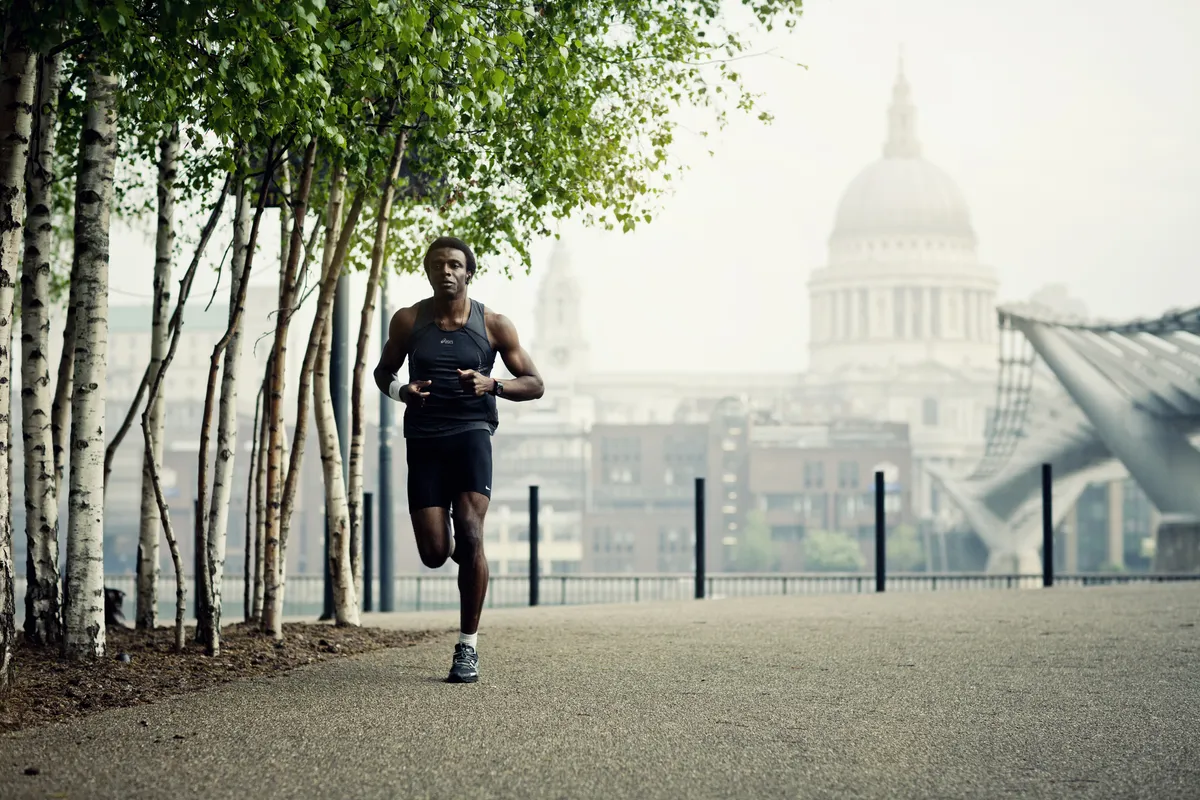
“Running helps strengthen muscles, joints and connective tissues by introducing appropriate impact forces that are lacking in cycling,” explains triathlon coach Chris Knight.
It also has the advantage that a very aerobically beneficial workout can be done in a relatively short session.
“Generally an endurance run session is shorter than a bike session, meaning less time away from the family or training in bad weather over the winter months,” adds Knight.
Being a competent runner also opens up the opportunity for other cross-training sports that require it, such as tennis. And with all your cash tied up in the money-eating world of cycling, running makes a refreshing change. You need a pair of trainers and, er, that’s about it.
Running might prove a refreshing addition to your training schedule, but the physiological benefits are limited, according to Jobson.
“Experience tells me that there is only limited fitness cross-over. If you’re just going for general endurance conditioning, a more ‘whole body’ exercise will provide a bit more bang for your buck”.
Getting started
Running’s popularity is partly due to not requiring anything but a pair of trainers to get started – but that’s like saying cycling doesn’t need much more than a bike.
However, investing in a running gait analysis and shoe fitting is important for running longevity.
Road running is easier to access, but off-road running is more strengthening and brings the added mental health benefits that being in the countryside can provide.
Running workout: tempo hill repeats
Kit needed: Running kit
Nutrition: Energy-rich snack 30-60mins prior to session
Warm-up: 10-15mins easy running
2x 100m strides, accelerating for 80m to nearly flat-out, decelerating over last 20m, walk back and repeat
1x 100m of ‘butt kicks’ for 20m, then accelerating for 60m and decelerating for 20m
1x 100m strides doing ‘high knees’ for 20m, then accelerating for 60m and decelerating for 20m
Main set: Use slight incline of just over 100m in length
10x 100m hill efforts. Run these efforts at tempo; they should feel comfortably uncomfortable – like you’re working hard, but not racing. Perceived effort of 8/10, where 5 is comfortable and 10 is racing.
Jog back to start point
Cool-down: 10-15min easy, reducing pace and heart rate.
1x 100m of ‘high knees’ for 20m, then accelerating for 60m and decelerating for 20m
Swimming

Swimming is recommended as a whole-body exercise that will maintain the endurance needed for cycling, while providing a refreshing change from pedalling.
“I usually recommend activities like swimming as they feel, psychologically, a million miles away from cycling,” says Simon Jobson. “These activities provide the best chance of a full cycling mental detox.
"It’s very difficult to find non-cycling activities that stimulate the body in a way that maintains cycling-specific fitness. Therefore, I usually suggest activities that will maintain the physiological foundation of most cycling: endurance, aka V02 max.”
Despite an increase in the number of pools in the UK over the past decade, there was a drop of almost 520,000 swimming activities to 4.2m in 2019 compared to the year before, according to Sport England.
For cycling enthusiasts, it needn’t be one or the other because swimming is one of the best off-the-bike activities we can do.
It’s low impact, improves flexibility, works as a cycling-substitute cardio workout and offers light resistance in every plane of movement. It’s also a good means of off-bike rehab; Tour de France podium finisher Richie Porte swims to improve his recovery.
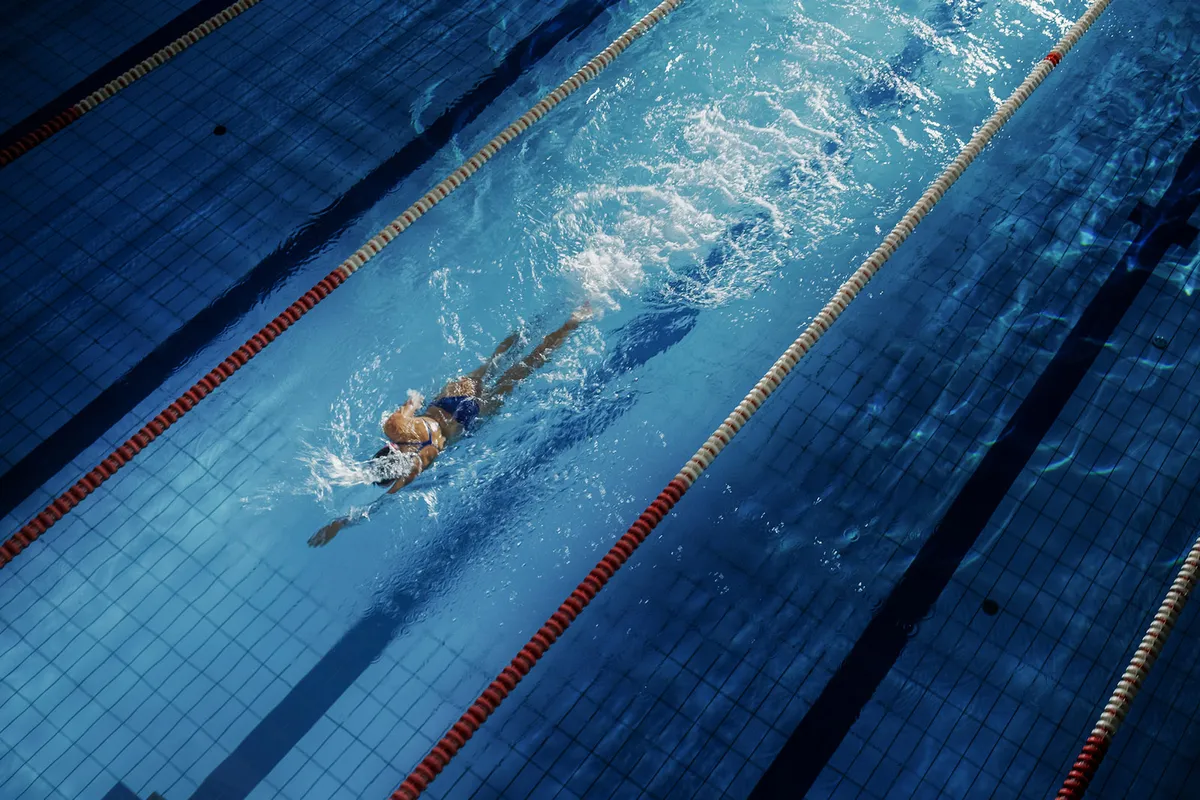
Coach Chris Knight describes how “rotational movements from swimming will help strengthen your core – key for cycling performance and endurance”.
There are great gains to be made in even a 30- to 45-minute session, so frequent sessions are easier to fit in the week than bike rides.
It can help improve flexibility and overall is an excellent cardio workout that gives resistance training to the whole body.
A warning, though: not all swimming strokes will suit everyone.
“If you have neck problems, the hyperextended position of breaststroke with your head out of the water can worsen your problem,” writes Jo McRae in Ridestrong: Essential Conditioning for Cyclists (Bloomsbury).
“If you have instability in your lower back, or knee problems, you might find the hyperextension of the lower back with the breaststroke kick problematic.”
Getting started
John Wood, of Tri-Coaching, says: “If you can’t swim these distances comfortably, shorten the distances to fit your swimming ability – try 25, 50 or 75m swim intervals instead."
- 10 minutes easy swim
- 3x 100m (usually 4 lengths), with 30 secs recovery, at steady pace
- 3x 100m with 20 secs recovery
- 3x 100m with 10 secs recovery
- 10 minutes easy swim
Swimming workout: Sub-threshold pace holder (1,600m)
Kit needed: Pull buoy, fins, kickboard
Nutrition: Eat a small, high-energy meal/snack (oats, pasta, sweet potatoes) at least an hour before your swim
Warm-up: 2x 100m freestyle, relaxed, breathing every 3 strokes
2x 50m freestyle, pull buoy, build the pace over the 50m
2x 25m kickboard, kick from the hips and brush the big toes together every 3-4 kicks
2x 25m freestyle, max efforts
Main set: 5x 100m freestyle, 80 per cent perceived effort or CSS pace if you have one (CSS stands for critical swim speed: equivalent of cycling’s FTP, or your lactate threshold, worked out using your times for a 400m time trial and a 200m time trial, taking a 5-8min active recovery – slow swim/stretch – between the two. Use an online CSS calculator to get your score).
5x 100m freestyle, holding the average pace from the set above, with 10sec rest between each 100m
Cool-down: 100m freestyle, easy pace
100m freestyle, pull buoy, easy pace
Pilates
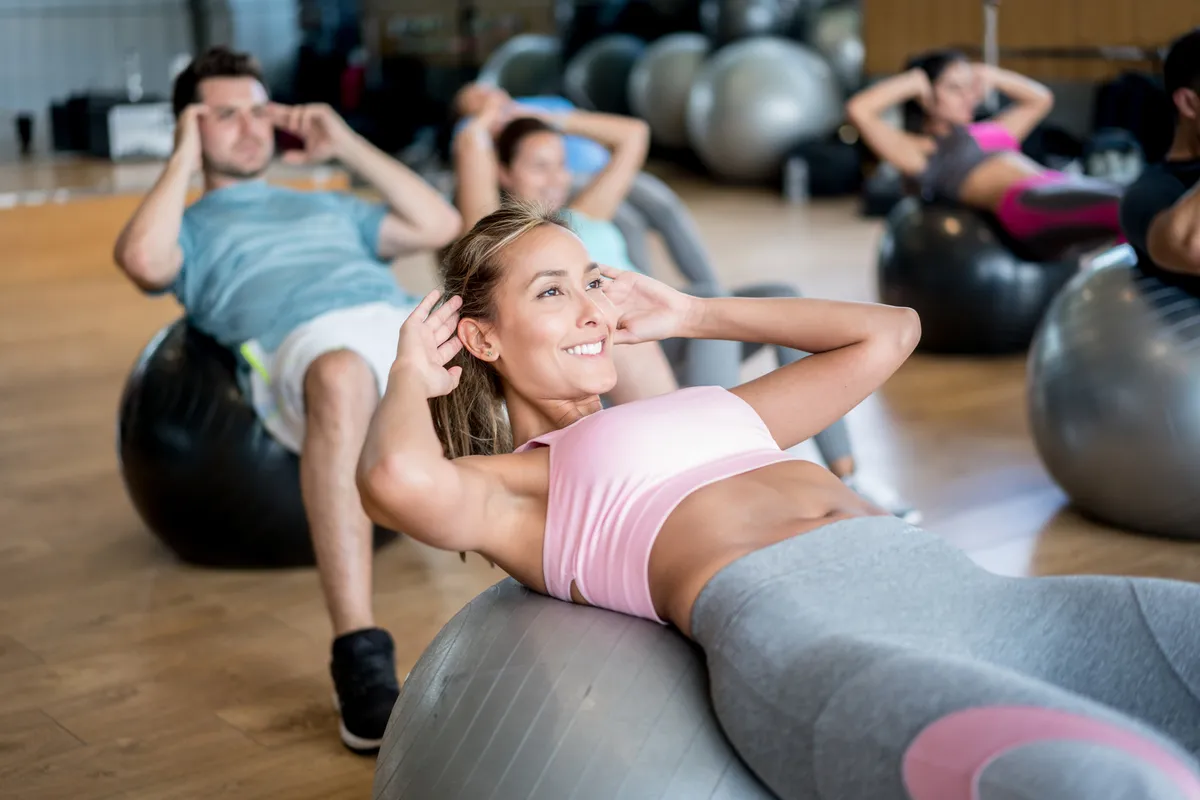
Anyone who’s ever tried pilates might initially wonder where the benefit for cycling is, such is its often passive, gentle nature, particularly at the novice stage.
Developed in the early 20th century by a German physical trainer by the name of Joseph Pilates, it involves stretching and manipulating your body into positions that can improve flexibility, strength and control through the body, particularly the core, with a big focus on breathing.
It can be done in either a fitness setting or a clinical one as part of physiotherapy rehab. You’ll practice repetitive exercises, standing or on the mat, with pilates aids including elastic bands and foam pads.

Along with yoga, pilates can be particularly useful for those looking to stay fit from middle age onwards, because it can counter the declining flexibility of your joints and spine.
It’s almost as beneficial as a form of mindfulness than a tool for physical improvement, which as a break from chasing cycling goals makes for a nice change.
"The isolated, focused exercises where movement is slow and deliberate can be easier to follow for cyclists whose overall movement skill can be low,” says Jo McRae.
That positive could also be a negative for cyclists, who might find the slow, calm progress a turn-off. It can also be expensive to join a class, which is essential to be able to follow an instructor’s movements.
Getting started
Join a class. Gyms (fitness) and physios (clinical) offer classes.
In the former, you’ll sit in front of an instructor, who will guide you through movements and breathing. With the latter, you might get prescribed exercises specific to your needs.
Cross-country skiing
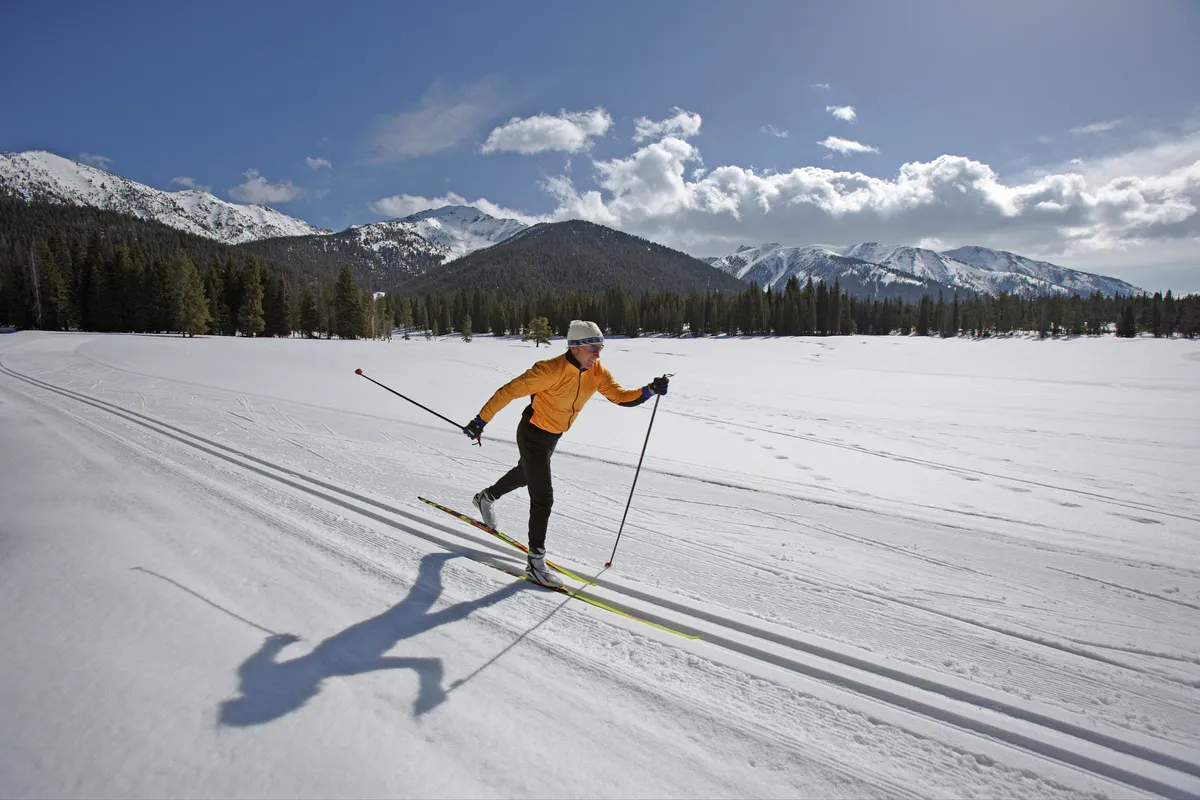
For many cyclists enduring snowy winters, this is the sport to maintain – and enhance – off-season bike fitness.
A fusion of aerobic conditioning, core strength, power, balance and coordination, it’s the ultimate alt-sport for cyclists, with famous practitioners including current pro Edvald Boasson Hagen and Classics legend Fabian Cancellara.
It uses the same muscle groups (quads, hamstrings, glutes, back and core) in fresh ways, requires good but not brilliant upper-body strength, is low impact and asks for similar balance and awareness as on fast descents.
There are two different types: ‘classic’ sees skiers glide in groomed, parallel tracks, with a grip wax on the centre of the ski used for propulsion. According to Ed Nicoll, a cycling enthusiast and former British professional XC skier, this is the “easiest and most accessible introduction to the sport. Anyone who can hike in the hills for a few hours could do it”.
‘Skating’ is a relatively newer development and involves shorter skis but longer poles, with more support for the ankles in the shoes. Technically, it’s more difficult, being devoid of classic’s parallel lines of movement, involving a synchronised movement of arms and legs, and requiring more upper-body strength.
The surfaces are groomed, except on the downhills, and give you more freedom to change direction. Wax is again used, this time on the whole ski. At the highest level, choosing the right wax for the conditions is a ‘dark art’, according to Nicoll, and often determines the winner.
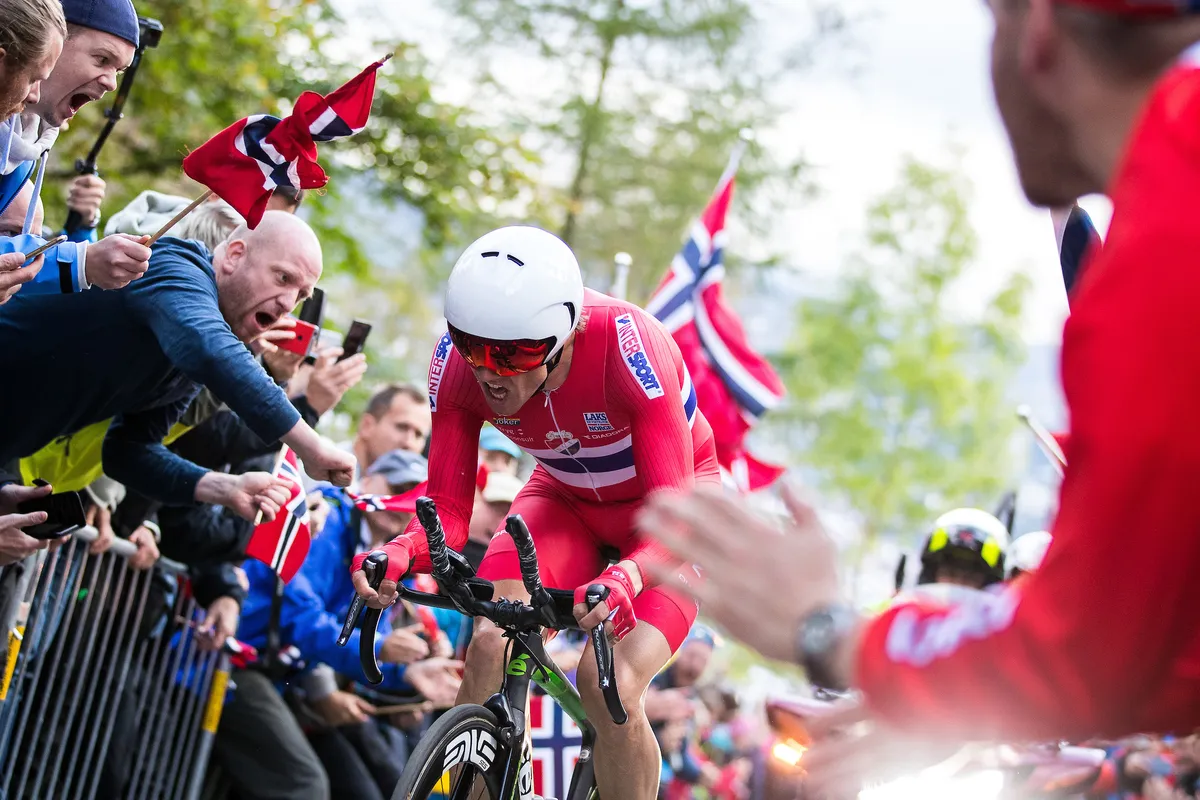
Like cycling, cross-country skiing will stress your aerobic system, but works the whole body like no other sport. It’s pretty low risk, too. Cancellara’s teams allowed him to do it, even though downhill skiing and many other sports were banned.
Cross-country skiing isn't exactly accessible in the UK, and there’s a lot to learn to become competent. Roller skiing is a good substitute to learn the basics before you head onto the snow.
Getting started
Try XC skiing out for a morning on your next ski holiday. It’s cheaper than downhill skiing.
In Gstaad, where I tried it out, it cost 33 Swiss Francs compared to 51 for a day lift pass. It’s also worth paying for an instructor to show you the ropes. Be patient – skating on skis, in particular, is a hard skill and might not come quickly.
Crossfit
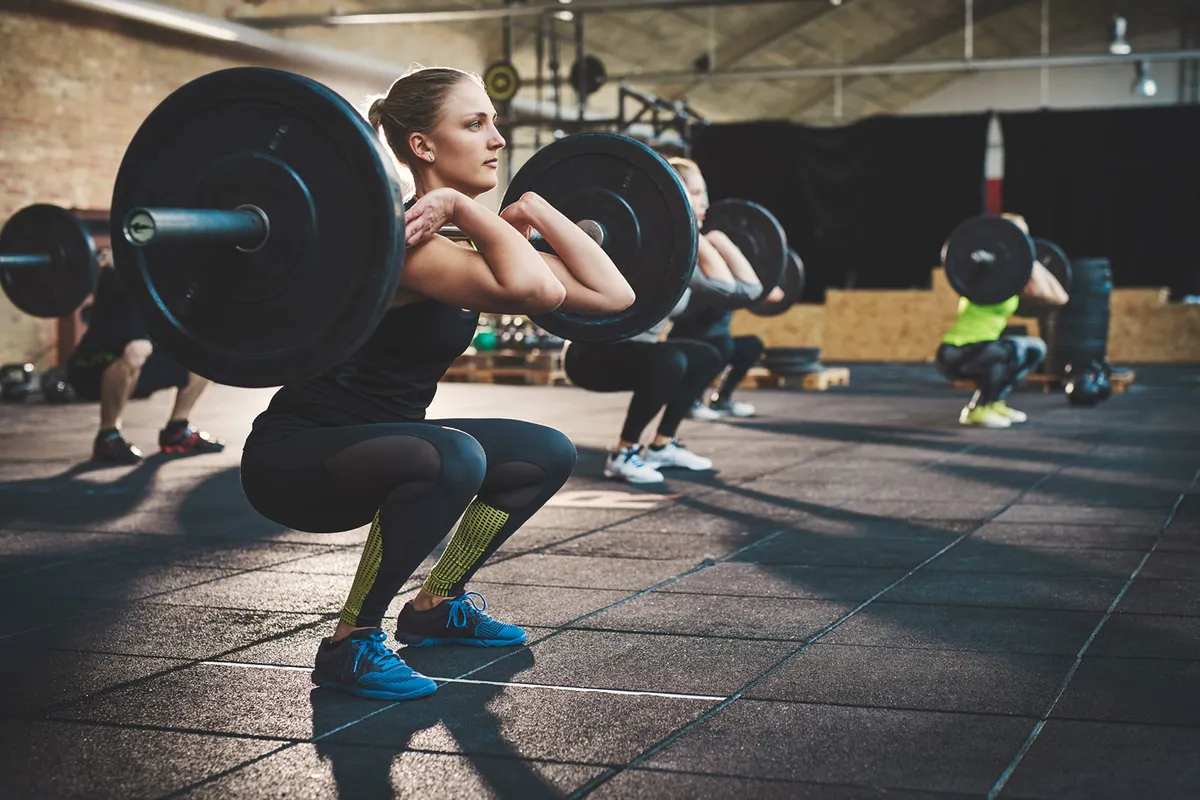
You think you’re fit and then you try Crossfit. Initially, sessions leave you feeling as though you’ve been hit by a bus – in a good way.
Workouts are constantly varied, functional movements performed at high intensity, using all muscle groups in a way that consistently challenges them.
There’s no just legs or upper-body day, so it develops full-body strength over time.
A class is split into three parts: the warm-up, the skill/strength set followed by the workout of the day (WOD).
The whole session helps to build explosive power too, not just strength or endurance, so it’s ideal for hill climbs.
“It’s a great training programme for cycling as one of the main focuses is on building a strong aerobic system,” says Basset-Smith.
Crossfit’s reputation is of being risky for injury, although much of that is probably down to user error rather than the actual movements.
Joining a Crossfit gym is important as there are bespoke coaches ensuring movements and weights are performed safely and effectively.
Getting started
Although some of the movements require skill and coordination, there’s an emphasis on learning them well so that they’re safe and productive.
“We get the individual to master the mechanics of the movements; drill in and repeat consistently good patterns of movement, then add in intensity to maximise the benefits of each action,” explains Basset-Smith.
Crossfit workout
Benefits: Builds strength and muscular endurance. The aim is to go fast but recover and repeat efforts, building a stronger aerobic base and threshold
Kit needed: Barbell and plates & pull-up bar
Nutrition: Energy-rich snack within two hours of training
Warm-up: Squat-specific hip mobility, aerobic activities
Main set: 5 sets of 5 reps of barbell front squats
Workout: Every 3 mins x 5 sets (15mins total)
200m run
10 barbell front squats (light moderate load)
10 bodyweight pull-ups
Rest in remaining time
Cool-down: Steady reduction in HR, then long static stretches
Strength training

Strength training brings multiple benefits, both for your cycling and overall health and fitness.
Many of us think that cycling regularly is enough for strength, fitness and health. Unfortunately, cycling is, in relative terms, non weight-bearing but to maintain bone health, weight-bearing activities involving strength and load are required.
A Systematic Review of Bone Health in Cyclists found that there’s an increased risk of osteoporosis for cyclists, and so it’s vital that we do strength work for lifelong bone and joint health.
“Cycling is largely a concentric activity – meaning that muscles are shortening as the legs push through the pedal. Eccentric (lengthening) strengthening in the gym stimulates different mechanisms of muscles, helping them reach their full range of movement,” says physiotherapist Bryan McCullough.
Getting started
Strength work involves body weight, resistance bands, free weights or machines.
Obviously, gym usage is ideal, but you can bring the gym to you by investing in dumbbells, kettlebells and anything your budget can stretch to.
Space-saving kit such as adjustable dumbbells are ideal.
McCullough recommends strengthening both the upper and lower body for cycling power.
“Good core strength is needed to transfer force through the legs and therefore the pedals.
Free weights are perfect, forcing the core musculature to maintain balance and stability. Additionally, a moderate to heavy load on the legs is ideal.”
Strength training workout: leg boosters
Benefits: Leg strength will increase load and power through the pedal stroke. Weight is specific to the individual: start off with lower weights, building up over time
Kit needed: Free weights of a suitable weight
Nutrition: Substantial meal 2 to 3 hours prior to workout
Warm-up: 10 minutes on bike followed by air squats (no weights), calf raises (push up onto your tiptoes then lower), lateral band walk (walk with an exercise band looped around your lower legs)
Main set: 3 sets of the following:
Weighted/back squats: Build to 10-12 reps of a medium weight, with a weight bar across your upper back or holding a weight in both hands in front of you at chest level
Single-leg deadlifts: Low weight, concentrating on form/balance (8-10 each side), Hinge at your hips to pick up a kettlebell or dumbbells from the floor, lifting one leg straight out behind you as you lower, then hinging back up with the weight(s) in your hands
Bulgarian split squats: Concentrating on form/balance (8-10 each side). Stand in front of a weights bench or similar with your back to it and lift one foot up behind you, resting the top of it on the bench
Lunge forwards then push back up. You can hold dumbbells by your sides to progress this move
Kettlebell/dumbbell swings: Engaging your glutes (10-12 reps). Stand with feet shoulder-width and a kettlebell on the floor in front of you
Hinging at the hips and bending your knees slightly, pick up the kettlebell and pull it back between your legs to create momentum to then swing it forwards and up to shoulder height. Let it return to between your legs and repeat
Single-leg bridges: Engaging your glutes (10-12 reps). Lie on your back on the floor, arms by your sides
Lift one leg off the floor, keeping it straight, then push your hips up until your body and lifted leg are all in a diagonal line. Lower and repeat
Cool-down: Stretch out the muscles you’ve been working
Nutrition: Eat some protein and fast-digesting carbohydrates within 20 to 40 minutes of finishing
